THE KOREAN WAR AND CIA TRAINING IN WASHINGTON, DC
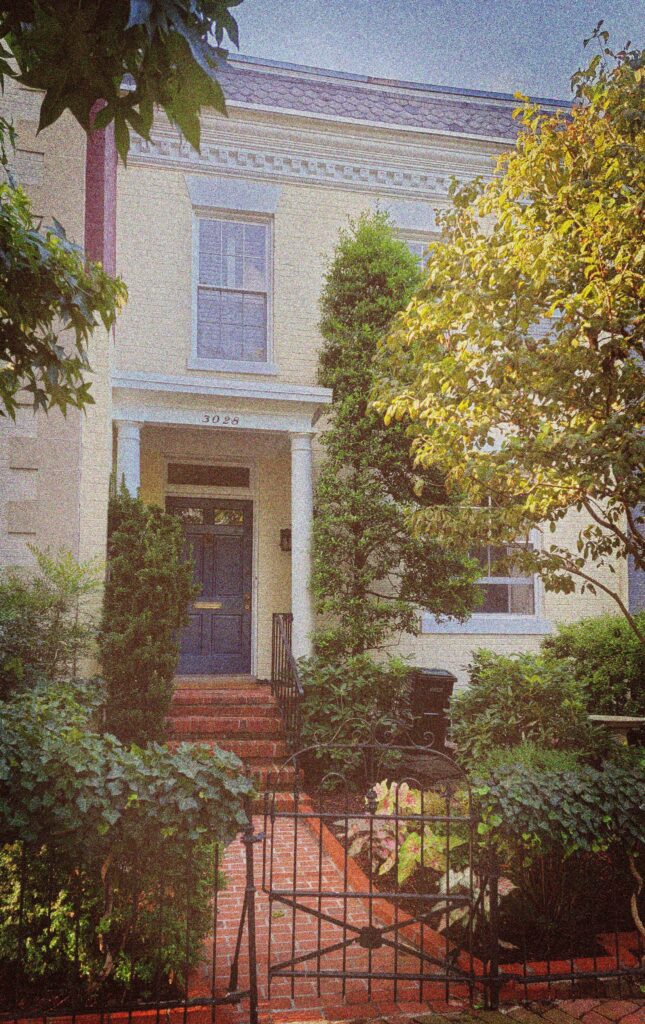
With nothing to keep him in Tampa, Mel moved to Washington, DC, at the beginning of 1953 to serve in the Army and train with the Central Intelligence Agency (CIA). The family lived in a row house on Dent Place in Georgetown, and the children attended elementary school at Holy Trinity School next to Georgetown University.
The Korean War began in 1950 and would continue until the signing of the Korean Armistice Agreement in July 1953. Mel was recalled to the Army and posted in the Pentagon as a Colonel. At the same time, he applied to the Central Intelligence Agency (CIA) and was readily accepted into their covert training program after his earlier OSS service in a similar program. He mentioned to me that his training occurred in Georgetown safe houses and in the nearby Warrenton Training Center (WTC), about 50 miles east of Washington, DC, as well as the main training center at Camp Peary, a.k.a. ‘The Farm’, near Williamsburg, Virginia.
His biological niece, Gertrude (daughter of his sister Esther), wrote, “My brother-in-law, who was recalled for duty for that [Korean] war, was sent to the Pentagon to serve his time, and one of his jobs was taking things to Colonel Lord’s office but he did not know at that time that he was Mom’s brother. When he came home and told us about it, he as well as all of us were very surprised.”
ASSIGNMENT IN MADRID
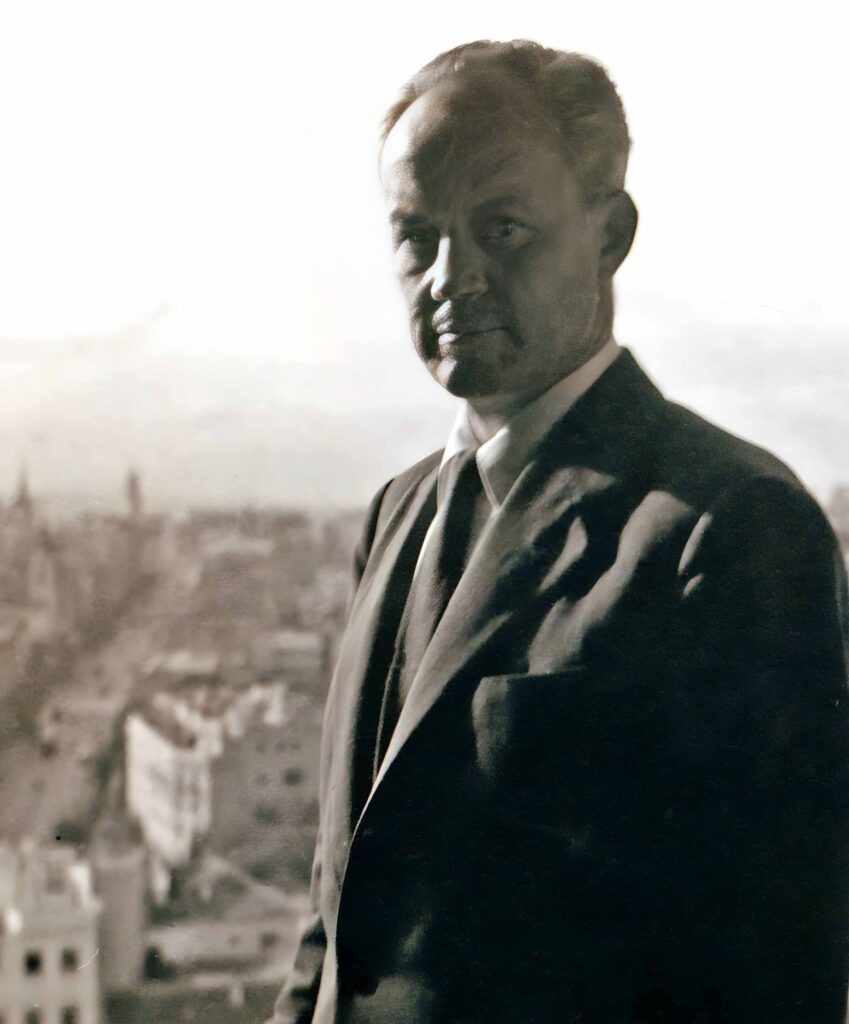
Mel’s first posting occurred in 1955. He was to go to Madrid, Spain, and help organize the Government’s military resistance to the Communist Axis threatening to sweep across Europe during the Cold War era. It began in 1950 when the Soviet-backed North Korean People’s Army invaded its pro-Western neighbor to the south. United States government officials feared this was the first step in a communist campaign to take over the world.
President Eisenhower had in 1953 opened U.S. relations with Spain under dictator Francisco Franco. Despite its undemocratic nature, Spain’s strategic position in light of the Cold War and its government’s anti-Communist position led Eisenhower to build a trade and military alliance with the Spanish through the Pact of Madrid, ultimately bringing an end to Spain’s isolation after World War II and bringing about the Spanish Miracle, a broad-based economic boom that occurred between 1959 and 1974.
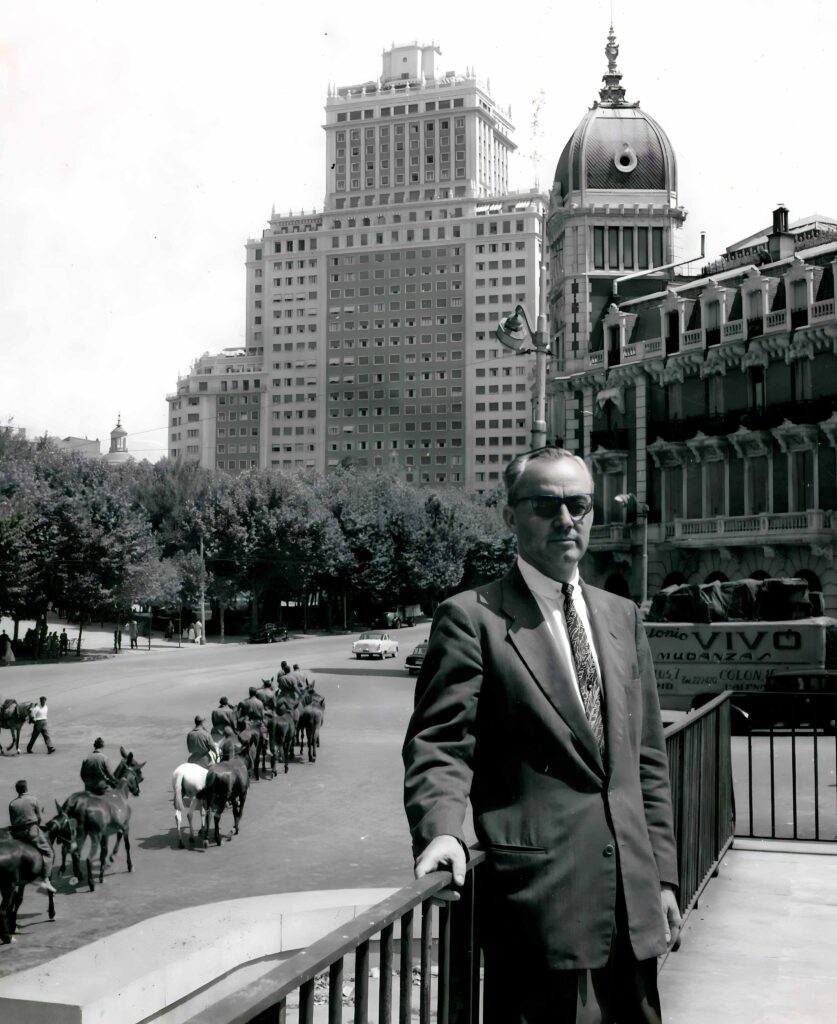
Under the Pact of Madrid, Mel was to coordinate U.S. actions with the Spanish military in preparation for a Russian invasion of Europe. Should that occur, Spain was to become the last line of defense before the Russians attacked the United States.
Mel’s cover was to work as a chemical engineer at Pennsalt International Corporation, a chemical manufacturing company with regional offices in Edificio España at Plaza de España in Madrid. It was near the family’s home at the tower of Paseo del Pintor Rosales, 28. The apartment was in front of the Parque del Oeste, and Montague and Marilee spent many hours in the park with their skates. There were often cocktail parties at the apartment full of generals and other high military officials. It was a major social center, and Carmen thoroughly embraced it.

Life in Paseo Rosales was wonderful. Carmen had many friends and ran a household that at one time reached ten maids. They lived in separate quarters at the back of one of three patios that we had, full of potted plants that I had to water every day. Carmen finally reached a boiling point with Julia one day when Mel returned from work, and rather than greet her, he went to Julia to ask what she was cooking for dinner. A huge uproar ensued, and the next day, Julia left to return to Palamós and her family.
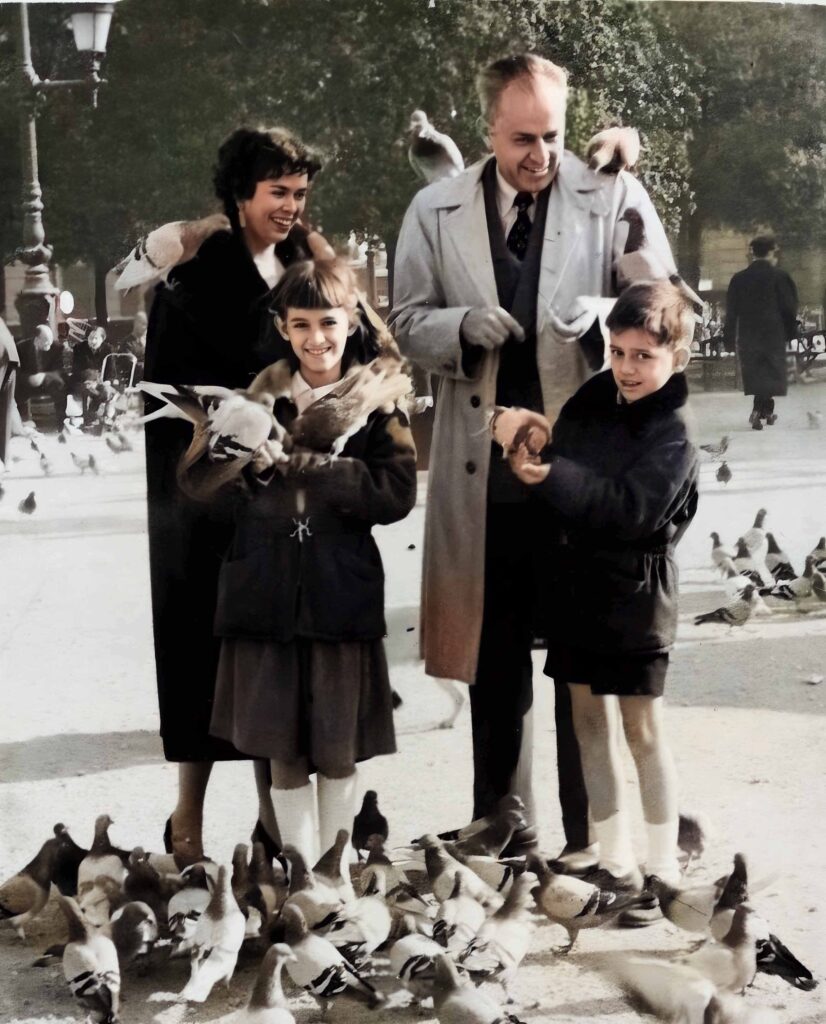
Marilee attended the Sacred Heart School, and I attended Ramiro de Maeztu. Though the latter was not far away, I remember having to be at the bus stop before 6 a.m. because the bus would go all around Madrid, picking up students before arriving at school. In the early hours of the morning, Franco’s Moorish Guard would march on their beautiful stallion horses in front of our building along Paseo Rosales. They were magnificent.
Carmen was very happy in Madrid. It was the time after the Spanish Civil War and WWII, and Spain was still under reconstruction. For a young boy like me, all these wars were the source of fantastic adventures. A friend of mine who lived nearby showed me the secret hiding places behind false libraries that existed in his home.
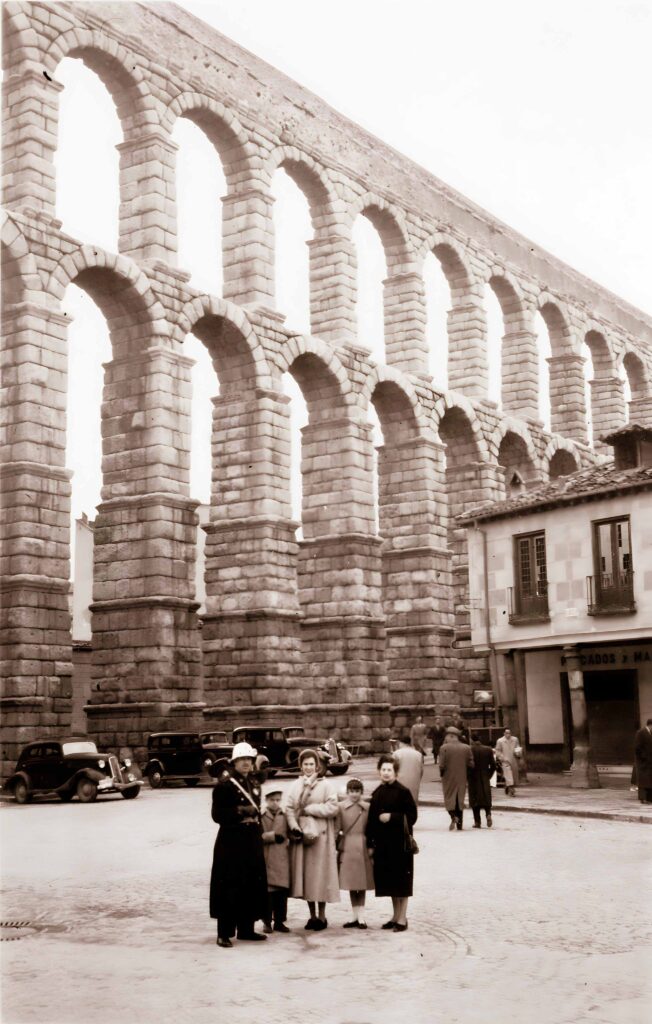
The bombed-out ruin next to our apartment building was populated by poor people that lived in the rubble, whom we called the ‘infantes’ for some reason, and we would spend hours at the window with the maids throwing down food at them and watching them run around the rubble to get it. It may sound cruel, but to a young 9-year-old boy, it was a lot of fun.
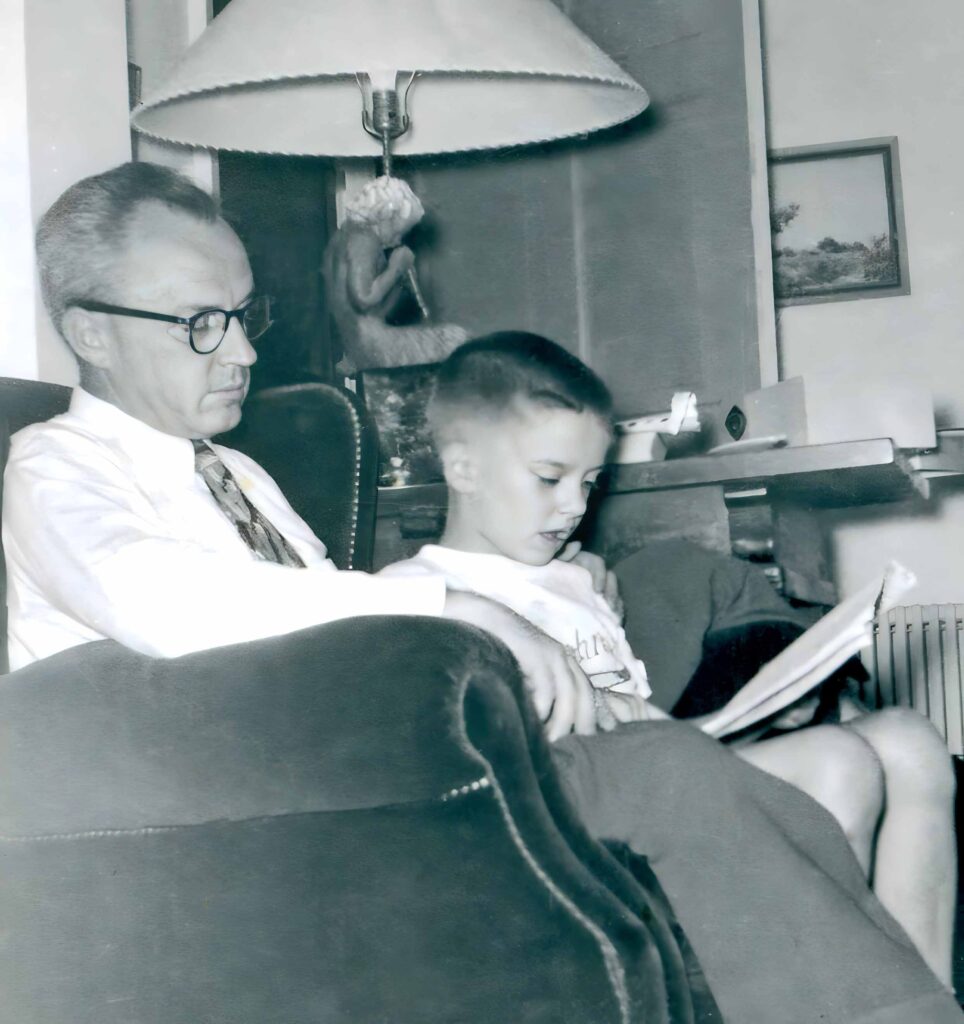
I also spent a term convalescing because the doctor discovered that I had a mitral valve prolapse in my heart. I took Spanish guitar lessons from a teacher who would come to our home in the evenings. He would teach guitar for an hour (I remember learning the Mazurka). Afterward, he would stay with me for another hour and tell me stories of his experiences during the Spanish Civil War, the most exciting of which was when he was standing on a balcony and a canon fired and the shell exploded nearby, with the result that a severed head landed on the balcony at his feet. He also told me that the most guilt-ridden time in the war was the day when he stole some bread from someone to take to his wife at home because she was starving. These were fascinating stories to a 9-year-old.
PALAMÓS
Carmen and the children would spend holidays in Palamós, while Mel stayed in Madrid to work. Much of his work involved traveling around the country to visit factories and other locations with a team of other people. But no details were told to us. Carmen was not aware of his CIA activities and only found out about them years later when Mel joined the World Bank and supposedly left the CIA.

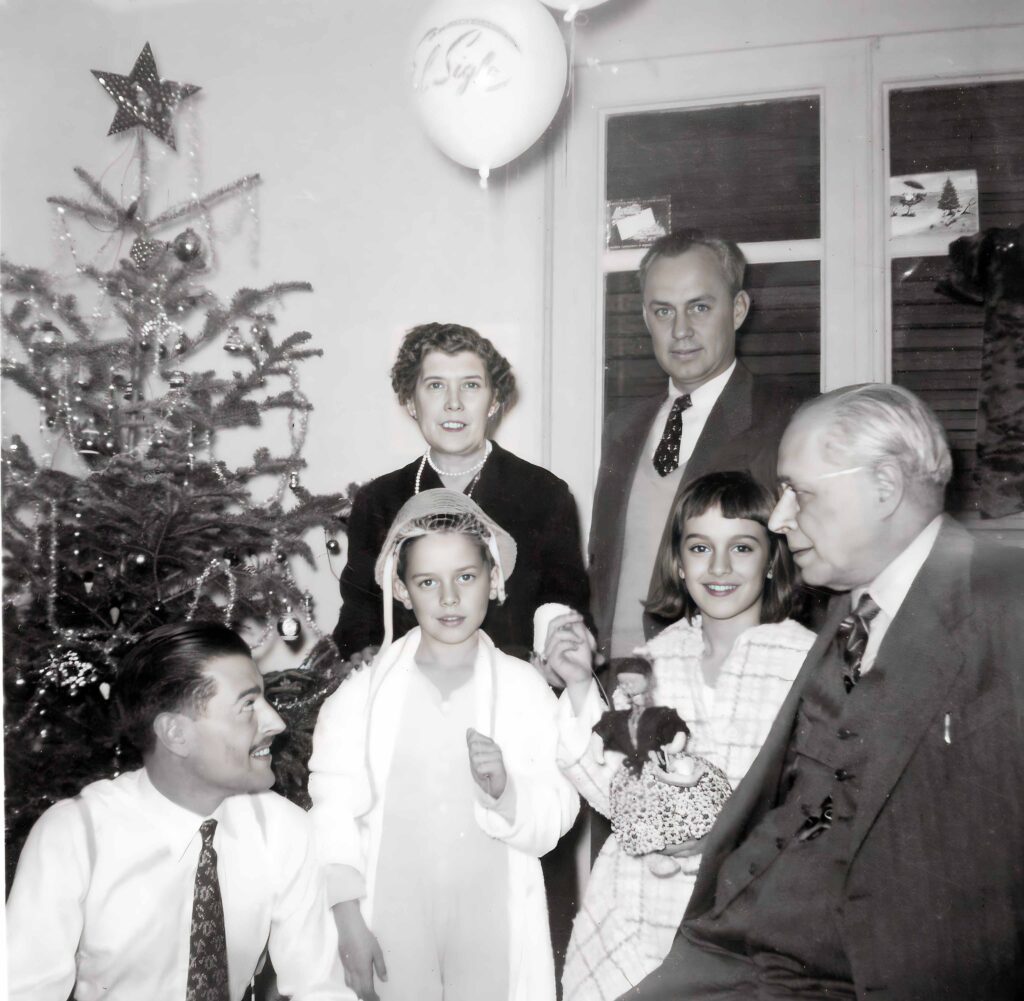
In any event, I thoroughly enjoyed being in Palamós without my very strict father. Without him, we could do everything and anything. Although this is the story of my father, I cannot fail to mention the great time that Marilee and I had in Palamós. Up until mid-1956, we always stayed in the flat of our aunt (Tia Carmen, sister of our grandmother), which was located on the Calle Mayor, above Sastreria Rafael. More importantly, it was at the corner across from the patisserie ‘Colboni’, which to us was an ideal location. In a home next to us was a gypsy family whose daughter, Mari, and son, Toni, were near our age. They were very poor, and Tia Carmen would give them food. There are many adventures that we had with them, but this biography of my father is not the right place for them. Strangely, I do not remember where our mother stayed. Still, I know she was in Palamós because we would go swimming with her and our aunts and afterward go for ‘aperitivos’ (appetizers) at the Los Caracoles bar across from the port, before heading to Abuelita’s home for an ‘arroz’ and other food.
DEATH IN PALAMÓS

Two noteworthy events occurred in this period. The first was the birth of Carmen (Carmencita) Belen to Carmen and Mel in Madrid in May 1955. The second was the death of Carmen’s father, Pelayo, in May 1956. My grandfather’s death was one of the saddest moments in my life, as it was for my mother. He was a kind, wise and wonderful person, and we loved one another deeply. My mother once told me that her father, Pelayo, was the only man she had ever really loved in her life, and I imagine she meant that he was the one man in her life that had always made her happy. Her love for Mel, I am certain, was marked by far greater extremes of her feelings, as suggested by her diary in the months leading up to her wedding to Mel (see “1940-1941-Diario de Carmen Lord Pages-SP.pdf”).
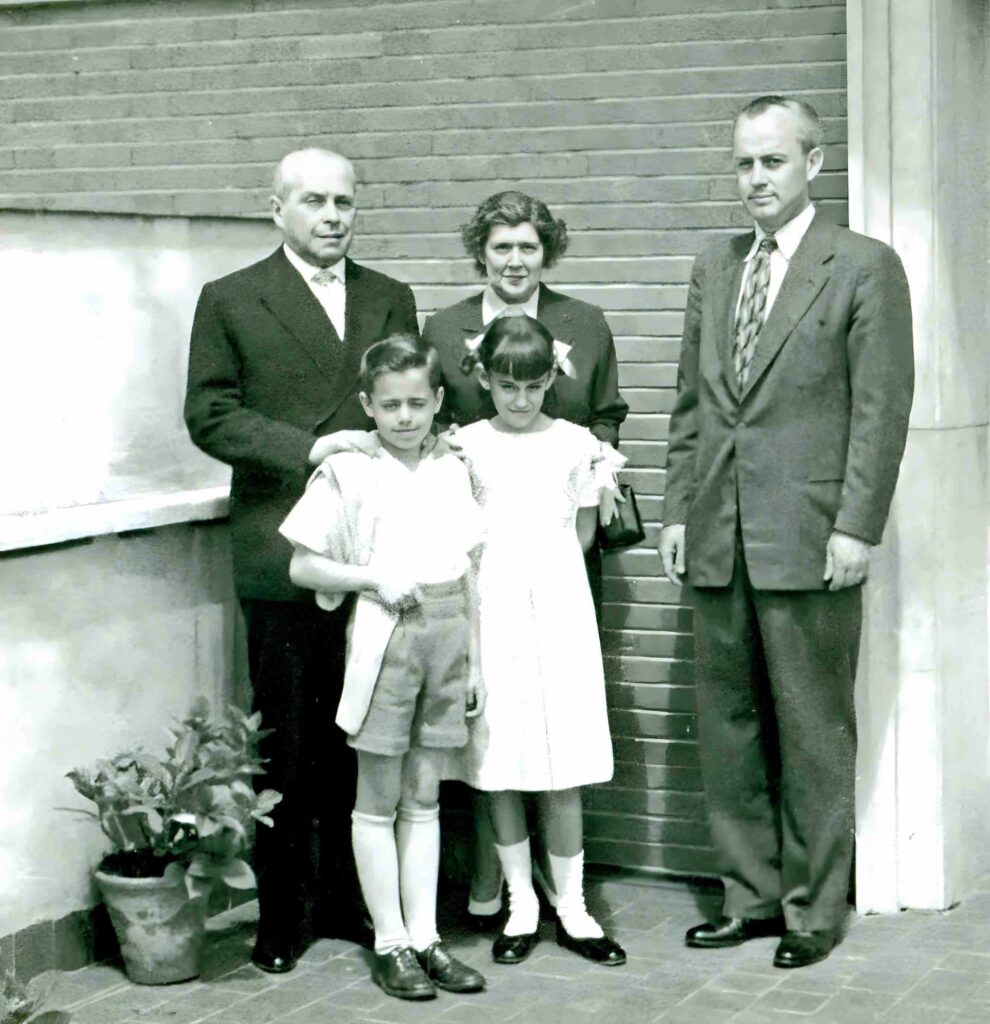
Born in Palamós in 1888, Pelayo Pagés Belleville had become a pharmacist and initially owned the pharmacy at the other corner of where Tia Carmen’s apartment was located in the Calle Mayor. He eventually sold the pharmacy to Juan Vilar Moner, the brother of his wife, Maria Vilar Moner. He moved to Barcelona, where he opened another pharmacy on the corner of Calle Aribau and Calle de la Diputación. Pelayo and Maria, along with their children Carmen and Pelayo, first lived in Calle Consejo de Cientos. But they gave that apartment to their son Pelayo Pagés Vilar and his wife Mercedes Ribera Casamada when they married. Then, when Pelayo retired, his daughter-in-law offered to switch her university major to study pharmacology so that the pharmacy could remain in the family.

In May 1956, Pelayo and Maria rented a lovely home in the large building owned by Victor Mir and his wife Dolores, which was located along Carrer de les Notaries. They arrived in time to celebrate the procession of the Virgen del Mar, which they were able to watch from their balcony. Everyone waved at them as the procession passed under the balcony, and I accompanied my fisherman friend and mentor, Navarro.
That night, while Marilee and I slept in the back room next to the garden, Pelayo suffered a heart attack. He had always had a weak heart and took nitroglycerin. But that day, he had forgotten his pills in Barcelona. He knew that he was dying, and Carmen was there with him. His wife, Maria, was not brave and said good-bye to him and left the room. Carmen, however, took him in her arms, and that is the way that he died that night, in her arms. In the morning, we were told of Abuelito’s death, and Marilee ran away to stay with Frank Cavanaugh in his apartment complex in San Antonio de Calonge during the week that followed. Pelayo was laid on a board between two chairs, and people came to say their goodbyes. Victoria and Pepe Gubert went to Barcelona to get his son and daughter-in-law, Pelayo and Mercedes. The whole town came out for his funeral. He was taken to the cemetery in a hearse drawn by two enormous horses, which was the custom back then and the last time a horse-drawn hearse was used in Palamós. It was a very sad time in our lives.